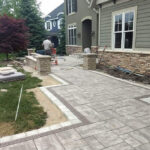The Science of Flight: Understanding Aerodynamics in Aviation Courses
Flying High: Understanding Aerodynamics at Anna College
Hey there, aviation enthusiasts! As you dive into your BBA in Aviation course at Anna College in Madurai, it's time to demystify the basics of aerodynamics and understand how airplanes stay up in the air. Let's take a lighthearted look at lift, thrust, drag, and more!
1. Lift: The Force that Defies Gravity
Imagine yourself standing on a windy day, arms outstretched like wings. When the wind blows against your palm, it creates an upward force, lifting your hand. That's lift! In aviation, wings are designed to generate lift by directing air over and under them, creating a pressure difference that keeps the aircraft aloft.
2. Thrust: Propelling Forward with Power
Thrust is like the engine's superpower—it's what propels the aircraft forward through the air. Just like a rocket launching into space or a car speeding down the highway, airplanes rely on thrust to overcome drag and move forward. Whether it's from a jet engine, propeller, or even a rocket booster, thrust is essential for flight.
3. Drag: The Invisible Force of Resistance
Picture yourself riding a bike against a strong headwind. You can feel the resistance pushing against you, slowing you down. That's drag! In aviation, drag is the force that opposes motion as the aircraft moves through the air. It's caused by factors like air resistance, friction, and the shape of the aircraft's fuselage and wings.
4. Weight: Gravity's Pull Down to Earth
Weight is the force of gravity pulling the aircraft downward toward the Earth. It's like the invisible hand that keeps us grounded—literally! In order to maintain level flight, the lift generated by the wings must equal the weight of the aircraft. If lift is greater than weight, the aircraft climbs; if lift is less than weight, the aircraft descends.
5. Center of Gravity: Balancing Act in the Sky
Just like a tightrope walker balancing on a wire, airplanes have a center of gravity that must be carefully managed to maintain stability in flight. The center of gravity is the point at which the aircraft's weight is evenly distributed in all directions. Pilots use control surfaces like ailerons, elevators, and rudders to adjust the aircraft's balance and keep it flying smoothly.
Flying Deeper: Exploring Advanced Aircraft Design at Anna College
Hey, future aviators! As you delve deeper into your BBA in Aviation course at Anna College in Madurai, it's time to take a closer look at the advanced concepts in aircraft design that make modern airplanes soar through the skies. Let's uncover the mysteries of wings and beyond!
1. Aerodynamic Efficiency: Maximizing Performance in the Sky
When it comes to aircraft design, aerodynamic efficiency is key to achieving optimal performance in the sky. Engineers use advanced techniques like winglet design, laminar flow airfoils, and blended winglets to minimize drag and maximize lift, allowing aircraft to fly farther, faster, and more efficiently than ever before.
2. Composite Materials: Building Strong, Lightweight Structures
Gone are the days of heavy metal aircraft—today's airplanes are built using advanced composite materials that offer the perfect combination of strength and lightness. From carbon fiber-reinforced composites to fiberglass laminates, these materials allow for the construction of sleek, aerodynamic airframes that are both durable and fuel-efficient.
3. Fly-By-Wire Technology: Navigating the Digital Sky
In the digital age, aircraft design has evolved to incorporate fly-by-wire technology—a system that replaces traditional mechanical controls with electronic ones. By using sensors, computers, and actuators to interpret pilot inputs and adjust flight controls, fly-by-wire systems offer greater precision, stability, and safety in the air.
4. Quiet Supersonic Travel: Breaking the Sound Barrier Silently
Imagine flying faster than the speed of sound without the deafening roar of sonic booms—thanks to advances in aircraft design, it's no longer just a dream. Engineers are working on developing supersonic aircraft that produce minimal noise pollution, allowing for faster, quieter travel across the globe.
5. Electric Propulsion: Pioneering Sustainable Aviation
With a growing focus on environmental sustainability, electric propulsion is emerging as a game-changer in aircraft design. From electric-powered drones to hybrid-electric commuter aircraft, these innovative propulsion systems offer the potential to reduce emissions, noise, and operating costs while paving the way for a greener future in aviation.
Ready to Soar: Embracing the Future of Aircraft Design
As you continue your journey through Anna College's BBA in Aviation program in Madurai, keep your eyes on the horizon and embrace the exciting advancements in aircraft design that are shaping the future of aviation. With aerodynamic efficiency, composite materials, fly-by-wire technology, quiet supersonic travel, and electric propulsion leading the way, the sky's the limit for what's possible in the world of aviation design. So buckle up, stay curious, and get ready to fly into the future of aviation at Madurai's aviation college. The runway awaits—let's soar!
Taking Control: Understanding Flight Dynamics at Anna College
Hey there, aspiring pilots! As you embark on your BBA in Aviation journey at Anna College in Madurai, let's dive into the fascinating world of flight dynamics and explore how pilots apply aerodynamic principles to navigate the friendly skies. Get ready to master the art of flight!
1. Getting Off the Ground: The Basics of Takeoff
Ever wondered how a massive airplane manages to lift off the ground and soar into the sky? It's all about harnessing the power of aerodynamics! Pilots use a combination of thrust, lift, and control surfaces like flaps and ailerons to generate the necessary lift and achieve a smooth takeoff.
2. Climbing High: Ascending to New Heights
Once airborne, pilots must master the art of climbing to reach their desired cruising altitude. By adjusting the aircraft's pitch angle and throttle settings, pilots can control the rate of ascent and maintain a steady climb until reaching their cruising altitude, where they'll level off and continue on their journey.
3. Banking and Turning: Navigating the Skies with Precision
As pilots cruise through the air, they often need to make turns to follow their flight path or avoid obstacles. By banking the aircraft to one side and using the rudder and ailerons to control the rate and angle of turn, pilots can navigate with precision and finesse through the crowded skies.
4. Descending Safely: Bringing It Back Down to Earth
Eventually, every flight must come to an end, and pilots must master the art of descent to bring their aircraft safely back down to earth. By reducing engine power, adjusting the aircraft's pitch angle, and using flaps and spoilers to control descent rate, pilots can execute a smooth and controlled descent for a safe landing.
5. Landing Like a Pro: Touching Down with Grace
The moment of truth has arrived—the final approach and landing! Pilots must carefully manage their speed, altitude, and descent rate to execute a smooth touchdown on the runway. By following proper landing procedures and using their skills to adjust for factors like wind and runway conditions, pilots can bring their aircraft safely to the ground and complete their journey.
Ready to Soar: Applying Aerodynamic Principles in the Cockpit
As you continue your aviation education at Anna College in Madurai, remember that mastering flight dynamics is essential for becoming a skilled and confident pilot. By understanding the principles of aerodynamics and applying them in the cockpit, you'll be well-equipped to navigate the skies with precision and grace. So buckle up, stay focused, and get ready to soar to new heights at Madurai's aviation college. The runway awaits—let's fly!
Exploring Aerodynamics: Hands-On Fun at Anna College
Hey, future aviators! Are you ready to dive into the exciting world of aerodynamics? In your BBA in Aviation course at Anna College in Madurai, you'll have the opportunity to get hands-on with fun experiments that will bring the principles of aerodynamics to life. Let's get started!
1. Lift Off: Paper Airplane Challenge
Grab some paper, fold it into your best paper airplane design, and get ready to test your skills in the ultimate paper airplane challenge! Experiment with different wing shapes, sizes, and angles to see how they affect the plane's flight path and overall performance. Who can create the plane that flies the farthest or stays in the air the longest?
2. Wind Tunnel Testing: Building Miniature Models
Construct miniature aircraft models using materials like foam board, balsa wood, or even LEGO bricks, and put them to the test in your very own DIY wind tunnel! By adjusting the airflow speed and direction, you can observe how different aerodynamic features like wing shape, fuselage design, and control surfaces affect lift, drag, and stability.
3. Balloon Rockets: Exploring Thrust and Propulsion
Get ready for some high-flying fun with balloon rockets! Attach a string to a straw, thread the string through the straw, and then inflate a balloon and tape it to the straw. When you release the balloon, the escaping air creates thrust, propelling the rocket forward. Experiment with different balloon sizes and pressures to see how they affect the rocket's speed and distance.
4. Bernoulli's Principle: Creating Lift with Ping Pong Balls
Discover the magic of Bernoulli's principle by conducting a simple experiment with ping pong balls and a hair dryer. Position the hair dryer so that it blows air upward, and then place a ping pong ball in the stream of air. As the air flows over the curved surface of the ball, it creates an area of low pressure above the ball, causing it to rise—just like an airplane wing generating lift!
5. Flight Simulation: Virtual Aviation Adventures
Take your aerodynamic exploration to new heights with flight simulation software! Using computer-based flight simulators, you can experience the thrill of piloting various aircraft and test your skills in different flight scenarios—from takeoff and landing to navigating through turbulent weather conditions. It's the perfect way to get a taste of the real-world challenges faced by pilots every day.
Ready to Fly: Hands-On Learning at Its Best
As you embark on your aviation journey at Anna College in Madurai, don't forget to take advantage of these hands-on aerodynamics experiments to deepen your understanding of flight principles in a fun and engaging way. Whether you're building paper airplanes, testing miniature models in a wind tunnel, launching balloon rockets, exploring Bernoulli's principle, or taking to the virtual skies in a flight simulator, there's no shortage of excitement awaiting you in the world of aviation education. So roll up your sleeves, get ready to learn, and let your imagination take flight at Madurai's aviation college. The sky's the limit—let's soar together!




